«previous pageCOMMUNICATIONS CATEGORY
Honor Award
Up By Roots: Healthy Trees and Soils in the Built Environment
James Urban, FASLA Annapolis, MD
client: The International Society of Arboriculture, Champaign, IL
Project Statement:
Up By Roots is the most comprehensive book written for landscape architects on the subject of soils and trees in built environment. It will become the desk reference for the profession when they include trees in their designs. The scientific knowledge of trees and soils is distilled to the most essential information and incorporated into peer-reviewed recommendations from initial soil analysis and design phases through the installation phase.
Project Resources
Director of Publications
Sharon Lilly, Director of Publications, The International Society of Arboriculture
Editor
Peggy Currid, Editor, The International Society of Arboriculture
Book Layout Design
Jody Boles
Cover Design
Marti Betz
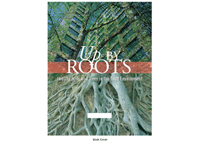
Book Cover (Photo: Marti Betz Design)

Table of Contents
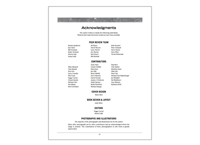
Acknowledgements
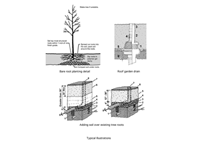
Typical Illustrations (Photo: James Urban)
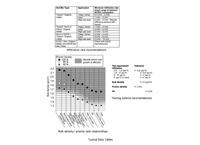
Typical Data Tables (Photo: James Urban)

Typical Photographs (Photo: James Urban)
"Such a wonderful contribution to the body of knowledge for the profession. A must-have for any practitioner. Just packed with great, new information."
— 2009 Professional Awards Jury
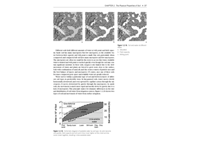
Soil and water at different states. a. Saturated; b. Field capacity; c. Wilting point. Schematic diagram of available water by soil type. As soils become compacted, field capacity and wilt point lines move higher on this chart and become closer together, resulting in less available water. Photo: James Urban)

In-office soil mix development. 1. Equipment required. 2. Measure mix by volume ration. 3 Mix soil. Do not over mix. Leave most of the soil peds intact. 4. Slowly compress soil in screen colander with fist, making a depression to hold water. 5 Slowly pour in water. 6 Observe drainage rate. (Photo: James Urban)

Monocultures of different scales. At what size does a monoculture become a problem? a. Small project: City Hall, San Francisco, pollarded plane trees. b. Large project: Embarcadero, San Francisco, date palms. c. Citywide, responding to climate conditions: Anchorage, downtown dominated by European mountain ash. d. Citywide, responding to cultural traditions: Large portions of Berlin, dominated by linden. e. Regional: Tulip poplar reaches monoculture status over vast areas of the mid-Atlantic region (central Maryland). f. Global: Sub-Arctic Alaska, white spruce dominates the sub-Arctic forest in a belt completely circling the globe. (Photo: James Urban)
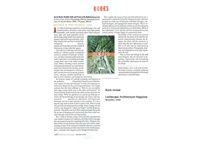
Books (Photo: Landscape Architecture Magazine)



